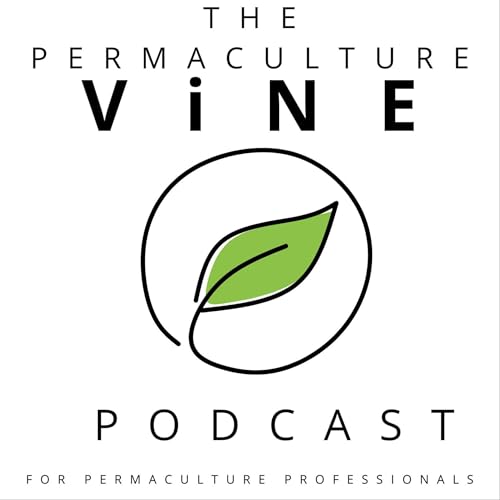The Unexpected Path to PermacultureNot every permaculture journey starts in a garden. For Marina and Alexander, founders of Thistle Thorne Permaculture, it began in the sterile halls of medicine—with a growing sense that something was missing.As Marina recalls, “After we were already medical doctors, we were unsatisfied with our career. And we wanted something that we could really dedicate our lives to that was meaningful.”Alexander’s search for meaning led him down an unexpected path. “I was searching about health and the systematic or universal aspects of health. And I came across about these discussions and research about soil health and human health.”This curiosity introduced him to Masanobu Fukuoka, the Japanese farmer and philosopher whose revolutionary “One Straw Revolution” challenged everything he thought he knew about agriculture.“I read his books and I was amazed. And I was wondering, like, that’s amazing. How can we go? How can I do it?”Fukuoka’s work opened the door, but it was Bill Mollison’s comprehensive permaculture texts that provided the roadmap. “When I researched further, I found Bill Mollison’s book. Because Bill Mollison, especially in introduction in Permaculture 2 and 1, he talks a lot about Fukuoka,” Alexander explains.Soon they were watching recordings from 2002: “There is an old PDC course recorded by Bill Mollison and Geoff Lawton. Yeah, with a young Geoff Lawton. And we did this course first.”The couple made a decision that would change everything: they would leave medicine behind and become permaculturists.Education and RealityMarina and Alexander enrolled in Geoff Lawton’s year-long online PDC course. While they found it valuable, they quickly realized something crucial about the limitations of theoretical learning.“We did the online PDC one year course. It was very, very good. Like we learned a lot,” Marina shares. “Maybe we had another expectation. We thought it would be more practical, but it’s very theoretical and very based on the book.”She continues, “We really think that you can only understand the important points when you really need theory in daily life. So we really had clear to us that we should start something so that we could really learn.”This realization led them to Austria for a three-month internship at what they believed would be a permaculture farm. The experience proved eye-opening—but not in the way they expected.“Actually when we came there, it was really organic, but it was not permaculture anymore,” Marina explains. “The owners, they did a permaculture course a long time ago and they didn’t implement actually many, many permaculture principles.”Fresh from their PDC training, Marina and Alexander could see countless opportunities. “As the course, the PDC was so fresh in our heads, we could see so many opportunities to implement permaculture systems.”Marina reflects on the experience: “They had so much work that in our vision was unnecessary and they could really implement systems that would work for itself like flywheels.”The experience taught them a valuable lesson about resistance to change in traditional farming communities. As Alexander observed, “We learned that people from the countryside, they are very rooted in old ways. So many times they have difficulty to break free from these old patterns.”Rather than seeing this as a setback, the couple recognized an opportunity. “Then we decided, OK, maybe we need to do our own stuff. Like we don’t have to wait for someone to do it so that we can learn. We can just start by ourselves,” Marina concludes.The Backyard RevolutionAfter their internship, Marina and Alexander faced a practical question. “That takes us to a very important question, like how do you afford life while you change careers and plans,” Alexander notes. “Of course, we had like savings from our previous life and we had a plan, like if we needed to, we would search for a part-time job.”More importantly, they had to decide their focus. “We were thinking about how do we want to go about permaculture,” Alexander recalls, listing various possibilities from conservation to large-scale farming.“But we decided to go about the backyard,” he states simply.Why backyards? “We based on Bill Mollison and Geoff Lotto as well, they say basically that backyards are a golden opportunity. Like they start with small trials and expand.”The couple had learned about research supporting this approach. As Alexander explains, “There is this research about how productive a site is. And they found out that between, I think, 100 meters and 5,000... they say that’s the most productive size of a farm because you can have the input, the human input, to create the interaction, interactions between the elements, to multiply the yield.”Marina adds context about their philosophy: “Like we see the garden as an ecology that sustains itself and it’s like a ...
続きを読む
一部表示

 2025/10/0358 分
2025/10/0358 分 42 分
42 分 48 分
48 分

